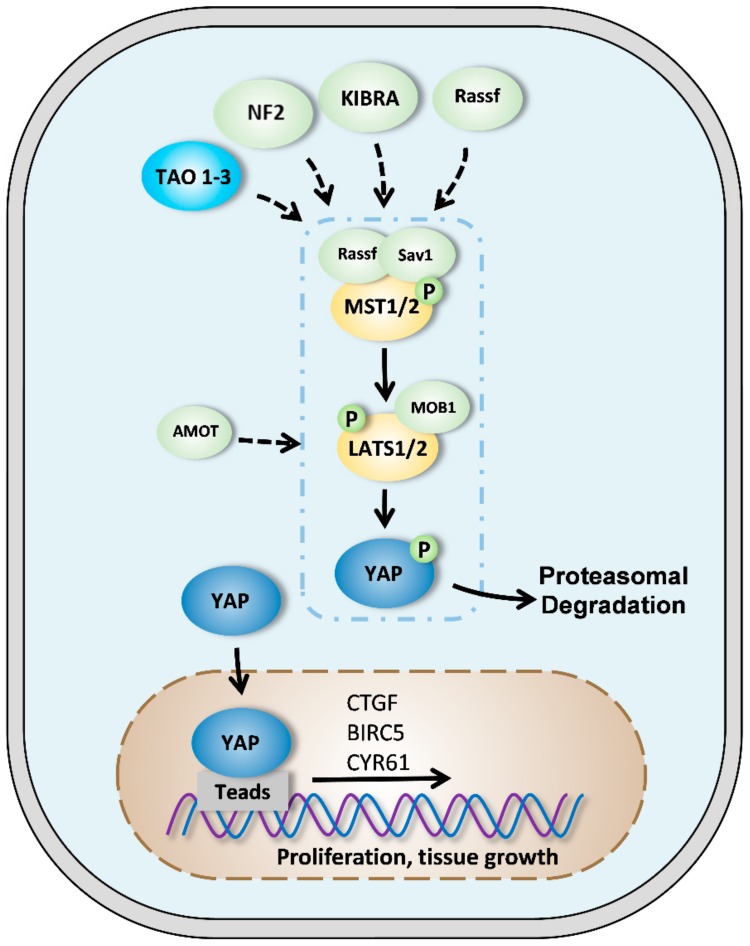Figure 1.
The Hippo/yes-associated protein (YAP) signaling pathway in mammals. When the Hippo signaling pathway is active, MST1/2 protein kinases (mammalian STE20-like kinase 1/2) are phosphorylated by NF2 (neurofibromatosis type 2), KIBRA, or TAO1-3. MST1/2 activates LATS1/2 (large tumor suppressor 1/2) proteins which are also stimulated by Sav1 (salvador) and Rassf (ras association domain family) proteins. LATS1/2 then phosphorylates YAP protein which is retained in the cytoplasm or is degraded by the proteasome. MOB1 (monopolar spindle-one-binder) and AMOT (angiomantin) proteins favor LATS1/2 phosphorylation and activity. When the Hippo signaling pathway is inactive, YAP is not phosphorylated and translocates to the nucleus where it can exert its transcriptional activity by binding to TEAD (transcriptional enhanced associate domain). YAP thus regulates the expression of specific targets such as CTGF (connective tissue growth factor), BIRC5 (baculoviral inhibitor of apoptosis repeat-containing 5), or Cyr61 (cysteine-rich angiogenic inducer 61).

